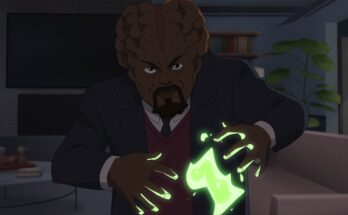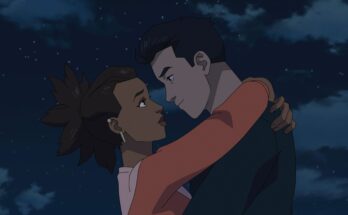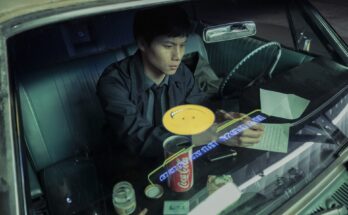Want to hear more from the actors and creators of your favorite shows and films? Subscribe to The Cinema Spot on YouTube for all of our upcoming interviews!
Netflix’s The Get Down hits the beat, and hits it hard.
The Get Down tells the story of a young man, Ezekiel “Zeke” Figuero, played by Justice Smith (Paper Towns), growing up in The Bronx, New York City during the ’70s while hip-hop culture begins to emerge. The story is narrated by an older Ezekiel played by Daveed Diggs (Zootopia, Black-ish), through his rap music at a concert in 1996.
Following the death of his parents, the poet Ezekiel is forced to live with his aunt and uncle. Upon meeting graffiti artist and aspiring DJ, Shaolin Fantastic, played by Shameik Moore (Dope), the two team up along with Zeke’s friends in order to become hip-hop artists. This story also features Zeke’s childhood-love, Mylene Cruz, played by Herizen Guardiola (Runaway Island), who aspires to be a Disco singer, but is hindered by various obstacles including her religious father. Using his rap as an outlet, Ezekiel tells their story along with the other adversities he and his friends encounter, including drugs, gangsters, and family.
He continued, “I wanted to answer the question, ‘Where did this brand new idea come from?'” As the show progresses, that question is quickly answered.
The Get Down boasts a complex story, music that invokes emotion, and good acting. That being said, the knock on The Get Down is its vibrant visuals that take the viewer out of the story, especially during the second half of the show.
The story has many subplots that may be confusing to follow, however, at no time does the show drift from advancing the main story. Each episode furthers the story substantially, and the subplots, although confusing at times, are consistently progressing. At the end of the season, the separate plots come together to form a solid, cohesive story.
The music is utilized well to drive the emotions and themes within the show. The older Ezekiel’s music guides the narrative and sets the tone, while the lyrics of Mylene’s songs express its themes. This gives the audience a clear understanding of their characters, and the show’s supporting cast. The music always sets the tone, and consistently makes the audience feel the way the directors intended for each scene.
While the story and music are solid, the acting exceeds expectations. Justice Smith and Herizen Guardiola’s performances are honest. They make viewers easily attached to them due to how relatable their characters are portrayed.
Shameik Moore’s performance as Shaolin Fantastic makes viewers hate him and love him at the same time. He portrays the emotional thought process his character experiences, and does so in a way that allows viewers to understand him and connect with him emotionally.
However, the actor that stands out is Giancarlo Esposito, who plays Ramon Cruz, Mylene’s religious father. Although his performance at times is excessive, it fits his character very well. While watching his scenes, the audience is in the mind of the people around him, and his performance brings understanding and clarity to the emotions the characters feel towards him.
While many elements of the show are astounding, a large knock on it is its use of cinematography. Baz Luhrmann is known for his visuals and use of vivid images. While this may have served him well in past films, some of the visuals used in The Get Down distract the audience from the story.
The change of transitional style between Parts 1 and 2 is blatant. This changes the continuity of emotion and theme that is built during the first part, and throws the show off balance. Complimented with vivid images in both parts that occasionally distract from the intensity of the scene, the cinematography and editing hinder the viewing experience.
The Get Down accomplishes Baz Luhrmann’s goal by telling this story, and telling how hip-hop rose from this time period. The show tells its story well, and delivers a strong, cohesive plot, complimented by supporting subplots.
Its music invokes strong emotions at the best times, and the acting sells the screenplay, giving viewers the chance to emotionally connect with the characters. However, the cinematography and use of editing between the two parts changes the momentum the series has after Part 1, and can occasionally deter the audience.
The Get Down is a great show with minor flaws that put off the audience, but still leaves its viewers satisfied.
Score: 4
Sources: Indiewire







6 Comments on “Review: The Get Down Season 1”